Themed collection ChemComm Advisory Board 2020

Cation-controlled catalysis with crown ether-containing transition metal complexes
This Feature Article reviews the structural motifs and catalytic applications of crown ether-containing catalysts and details the development of “pincer-crown ether” ligands for applications in controlled catalysis.
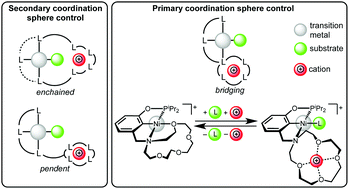
Chem. Commun., 2019,55, 5047-5059
https://doi.org/10.1039/C9CC00803A
The application of click chemistry for targeting quadruplex nucleic acids
The Cu(I)-catalyzed azide and alkyne 1,3-dipolar cycloaddition (CuAAC), commonly known as the “click reaction”, has emerged as a versatile synthetic tool for targeting quadruplex nucleic acids.
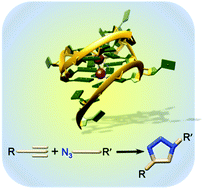
Chem. Commun., 2019,55, 731-750
https://doi.org/10.1039/C8CC07107A
Photoactive supramolecular cages incorporating Ru(II) and Ir(III) metal complexes
Cage compounds incorporating phosphorescent Ru(II) and Ir(III) metal complexes possess a highly desirable set of optoelectronic and physical properties. This feature article summarizes the recent work on cage assemblies containing these metal complexes as photoactive units, highlighting our contribution to this growing field.
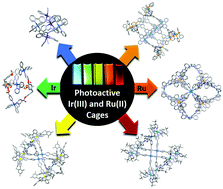
Chem. Commun., 2019,55, 139-158
https://doi.org/10.1039/C8CC08327D
Silicon incorporation in polymethine dyes
Incorporation of silicon into heterocycles for polymethine dyes can impart red-shifts of up to 100 nm, while also enhancing photostability up to 10-fold, resulting in photostable fluorophores with emission above 900 nm.
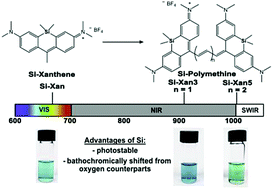
Chem. Commun., 2020,56, 6110-6113
https://doi.org/10.1039/C9CC09671J
Selective sensing of THC and related metabolites in biofluids by host:guest arrays
A host–guest fluorescence sensor array can selectively detect THC and its metabolites in biofluids such as urine and saliva.
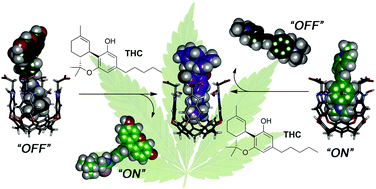
Chem. Commun., 2020,56, 4352-4355
https://doi.org/10.1039/D0CC01489C
Template-guided selection of RNA ligands using imine-based dynamic combinatorial chemistry
This study establishes the applicability of imine-based dynamic combinatorial chemistry to discover non-covalent ligands for RNA targets.
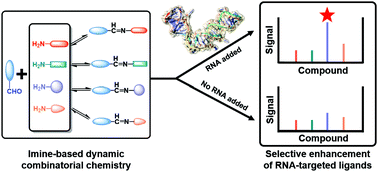
Chem. Commun., 2020,56, 3555-3558
https://doi.org/10.1039/D0CC00266F
Bioadhesive supramolecular hydrogel from unprotected, short D,L-peptides with Phe-Phe and Leu-Asp-Val motifs
Minimalistic and uncapped D,L-peptides self-assemble into bioadhesive hydrogels that successfully mimic the extracellular matrix and lead to high cell viability.
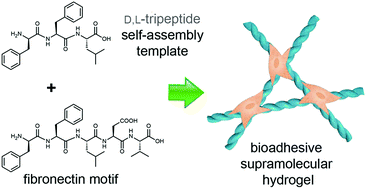
Chem. Commun., 2020,56, 3015-3018
https://doi.org/10.1039/C9CC09947F
Antiaromaticity gain increases the potential for n-type charge transport in hydrogen-bonded π-conjugated cores
Hydrogen bonding increases antiaromaticity and lowers the LUMO energy levels of non-aromatic π-conjugated cores.
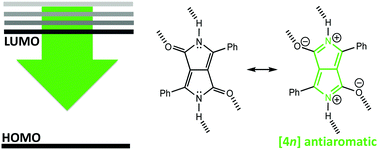
Chem. Commun., 2020,56, 2008-2011
https://doi.org/10.1039/C9CC09670A
Extremely twisted and bent pyrene-fused N-heterocyclic germylenes
The first examples of pyrene-fused Janus-type N-heterocyclic germylenes (NHGe) are reported.

Chem. Commun., 2019,55, 14954-14957
https://doi.org/10.1039/C9CC08703F
Sensing of citrulline modifications in histone peptides by deep cavitand hosts
A host–guest fluorescence sensor array can site-selectively sense histone peptide modifications that change only a single atom in the peptide backbone.

Chem. Commun., 2019,55, 13259-13262
https://doi.org/10.1039/C9CC07002H
A supramolecular sensor array for selective immunoglobulin deficiency analysis
A host–guest based fluorescence sensor array can fully discriminate five structurally similar Ig protein isotypes, and recognize Ig deficiencies in serum.

Chem. Commun., 2019,55, 11563-11566
https://doi.org/10.1039/C9CC06064B
Size dependent selectivity of Cu nano-octahedra catalysts for the electrochemical reduction of CO2 to CH4
Octahedral Cu nanocrystals in the size range of 75–310 nm are synthesized and investigated for electrochemical CO2 reduction.
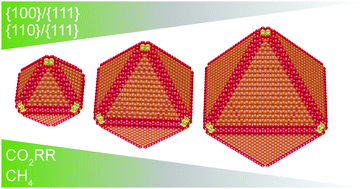
Chem. Commun., 2019,55, 8796-8799
https://doi.org/10.1039/C9CC02522G
Outstanding reversible H2S capture by an Al(III)-based MOF
MIL-53(Al)-TDC was demonstrated to be an optimal adsorbent for acidic H2S capture combining an unprecedented uptake at room temperature, excellent cyclability and low-temperature regeneration.
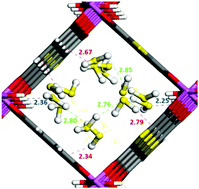
Chem. Commun., 2019,55, 3049-3052
https://doi.org/10.1039/C8CC09379B
s-Block carbodicarbene chemistry: C(sp3)–H activation and cyclization mediated by a beryllium center
The first examples of carbodicarbene (CDC)-s-block complexes have been synthesized. Unusual C–H bond activation and cyclization discovered.
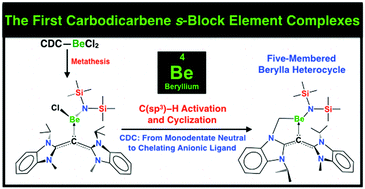
Chem. Commun., 2019,55, 1967-1970
https://doi.org/10.1039/C8CC10022E
Heavy interstitial hydrogen doping into SrTiO3
We first report the heavy interstitial hydrogen doping and metallization of otherwise highly insulating SrTiO3 by hydrogen ion beam irradiation.
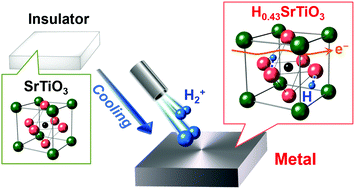
Chem. Commun., 2018,54, 12439-12442
https://doi.org/10.1039/C8CC07021K
Self-assembly of penta-selenopeptides into amyloid fibrils
Here, we report the synthesis of a penta-selenopeptide consisting of five benzyl protected selenocysteine residues.
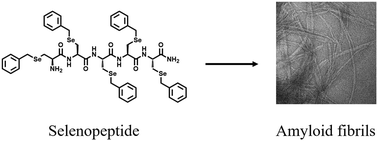
Chem. Commun., 2018,54, 11697-11700
https://doi.org/10.1039/C8CC06528D
Asymmetrical etching of Ag nanoparticles into symmetry-reduced bi-metallic nanocups at the single-nanoparticle level
By employing the water/air interface-confinement effect, local nanomasking and thus selective etching were achieved on single interfacial nanoparticles, developing a series of symmetry-reduced cubic, spherical, trough-like nanocups.
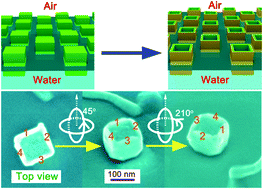
Chem. Commun., 2018,54, 7227-7230
https://doi.org/10.1039/C8CC03491E
Covalent switching, involving divinylbenzene ligands within 3D coordination polymers, indicated by changes in fluorescence
Reversible single-crystal-to-single-crystal transformations of two photo-responsive three-dimensional coordination polymers exhibit green/blue and green/blue-green fluorescence switching behaviors.
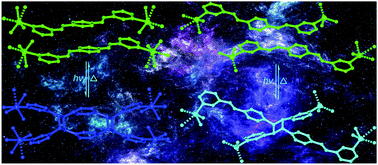
Chem. Commun., 2018,54, 5831-5834
https://doi.org/10.1039/C8CC02743A
Chemoselective epoxidation of cholesterol derivatives on a surface-designed molecularly imprinted Ru–porphyrin catalyst
High chemoselectivity for the C5![[double bond, length as m-dash]](https://www.rsc.org/images/entities/char_e001.gif) C6 epoxidation of cholesterol derivatives without protecting other oxidizable functional groups was achieved on a newly designed molecularly imprinted Ru–porphyrin catalyst using a SiO2-support.
C6 epoxidation of cholesterol derivatives without protecting other oxidizable functional groups was achieved on a newly designed molecularly imprinted Ru–porphyrin catalyst using a SiO2-support.
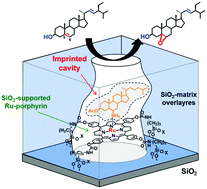
Chem. Commun., 2018,54, 5114-5117
https://doi.org/10.1039/C8CC00896E
Tuning the structure and catalytic activity of Ru nanoparticle catalysts by single 3d transition-metal atoms in Ru12–metalloporphyrin precursors
The single 3d metal atoms at the central position of the Ru12–metalloporphyrin complex precursors exerted a significant influence on the structure and hydrogenation performance of the Ru nanoparticles on the SiO2 surface.
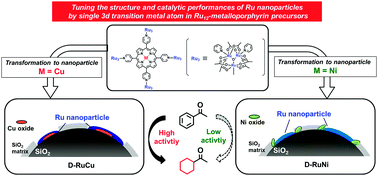
Chem. Commun., 2018,54, 4842-4845
https://doi.org/10.1039/C7CC09862F
Aqueous phase sensing of cyanide ions using a hydrolytically stable metal–organic framework
A fluorescent bio-compatible anionic metal–organic framework (MOF) for pure aqueous phase recognition and detoxification of cyanide ions (CN−) has been reported. The MOF acts as a molecular reaction vessel exclusively for cyanide ions, inducing a signal turn on response in aqueous media.
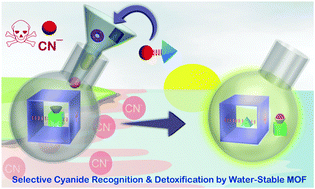
Chem. Commun., 2017,53, 1253-1256
https://doi.org/10.1039/C6CC08557A
About this collection
We are delighted to bring you a collection of recent articles authored by our new Advisory Board appointments. We hope you enjoy reading their exciting and high-impact research.